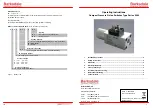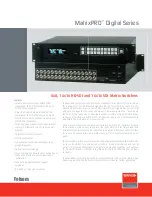
1. Introduction-8
FILTERING
After learning the address, the switch checks:
l
Whether the source port or destination port is in the
forwarding state.
l
Whether the source MAC address or destination MAC
address is to be filtered.
l
Whether the source port ID is the same as destination port
ID.
If any of these conditions are met, the switch drops the receiving.
Otherwise, it continues with the forwarding process described
below.
FORWARDING
During the forwarding process, the switch checks whether the
<destination MAC address, VLAN> pair is unknown.
l
If it is unknown, the switch floods the receiving frame to all
ports in the VLAN, excluding the source port.
l
If it is known, the switch forwards the receiving frame to the
port associated with the <destination MAC address, VLAN>
pair. At the same time, the switch ascertains the individual’s
port’s VLAN tagging/untagging configuration and
corresponding VLAN ID to render the appropriate frame
tagging when the frame is ready to be transmitted.
MULTICAST SWITCHING
For multicast switching, the switch checks whether the received
frame is a BPDU. If a BPDU is received, the switch forwards the
frame to the CPU for processing by the spanning tree protocol.
Otherwise, the switch performs the following processes:
VLAN CLASSIFICATION
Same as for unicast switching.














































